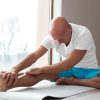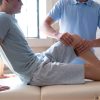A Guide for Parents of Young Athletes
What Is Sever’s Disease?
Sever’s Disease, or calcaneal apophysitis, is one of the most common causes of heel pain in children, especially active adolescents aged 8–15. It occurs when the growth plate in the heel bone becomes inflamed due to repetitive stress, commonly from running, jumping, and other high-impact activities.
Signs and Symptoms to Watch For
– Pain at the back or underside of the heel, especially after physical activity.
– Swelling or tenderness around the heel.
– Difficulty walking or limping.
– Increased discomfort when pressing on the heel or stretching the calf muscles.
If your child complains of heel pain that worsens with activity, Sever’s Disease could be the cause. A sports physiotherapist can confirm this through a detailed history and physical examination.
What Causes Sever’s Disease?
– Growth Spurts: Rapid bone growth outpaces the surrounding muscles and tendons, creating tension at the growth plate.
– High-Impact Sports: Activities like soccer, basketball, and athletics place repeated stress on the heel.
– Poor Footwear: Inadequate support can exacerbate stress on the feet.
– Tight Muscles: Limited flexibility in the calf and Achilles tendon can increase heel strain.
Treatment and Rehabilitation
The good news is that Sever’s Disease is temporary and can be managed effectively. Here’s how:
1. Rest and Activity Modification
Encourage your child to take a break from high-impact sports until the pain subsides. Low-impact activities, like swimming or cycling, can help maintain fitness without straining the heel.
2. Footwear and Orthotics
Choose supportive, cushioned shoes and consider custom orthotics to reduce heel pressure.
3. Stretching and Strengthening
A sports physiotherapist can guide your child through exercises to stretch the calf muscles and strengthen the feet to reduce tension.
4. Ice Therapy
Applying ice to the heel after activity can reduce inflammation and provide relief.
5. Pain Management
Over-the-counter pain relief, as recommended by your healthcare provider, can help during acute flare-ups.
Why See a Sports Physiotherapist?
A physiotherapist is key to a full recovery. They can:
– Provide an accurate diagnosis and rule out other conditions.
– Develop a tailored treatment plan that includes stretching, strengthening, and footwear advice.
– Offer education on preventing future episodes, ensuring your child can return to sports safely.
With proper care, most children recover fully from Sever’s Disease within a few months. Early intervention can make all the difference in reducing pain and getting your child back to doing what they love.
Conclusion
Sever’s Disease can be a painful hurdle for young athletes, but it’s manageable with the right support. If your child is struggling with heel pain, don’t hesitate to reach out to a sports physiotherapist for a comprehensive, personalized approach to recovery.





